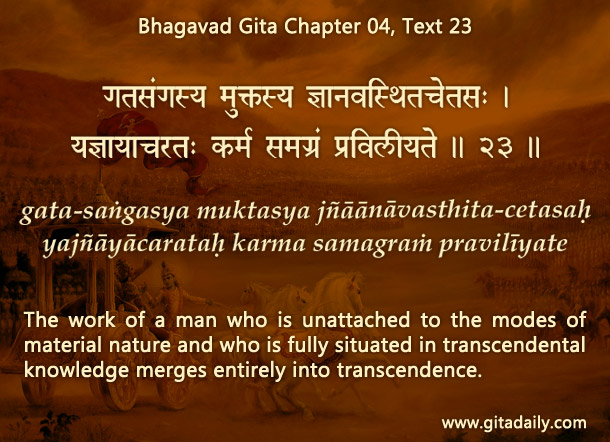The essence of bhakti is the outflow of the human heart’s love towards the divine and the inflow of the divine’s love into the human heart. Over the centuries, the bhakti tradition has developed structures that facilitate and accelerate this human-divine communion.
But bhakti exponents are vigilant to never let the structure override the substance of the reciprocation of love. If time-place-circumstance change, they adapt the structure accordingly to ensure continued access to the substance. Thus, the bhakti tradition is not dogmatic but is pragmatic – its living seers internalize the timeless principles outlined in bhakti texts such as the Bhagavad-gita and then customize those principles as necessary.
The Gita itself exhibits such pragmatism in its expansive reconceptualization of yajna (04.24-33). Conventionally, yajna refers to the ritual fire-sacrifices widespread in pre-Gita times. But the Gita focuses on the underlying universal principle of sacrifice: to give up for a higher cause things that we usually use for our own pleasure. With this focus, it (04.23) urges us to make all our work into sacrifice. How? By working in a mood initially of detached dutifulness (karma-yoga) and eventually of devotional dedication (bhakti-yoga).
Applying this sacrificial mode of work to the Kurukshetra context, Krishna helps Arjuna see the war as a sacrifice, wherein his Gandiva bow is the ladle, the battlefield is the site of sacrifice and the vicious Kauravas are the oblation. Later (11.25-30), while displaying his universal form, Krishna provides vivid visual vindication of this martial conception of sacrifice. He shows how the universal form’s fiery mouth devours the Kaurava warriors – akin to how fire, said to represent the mouth of Vishnu, serves as the medium for our sacrificial offerings to reach the Supreme.
Following Krishna’s footsteps and using the Gita’s light, contemporary bhakti teachers demonstrate similar non-dogmatic pragmatism in keeping the bhakti tradition alive and vibrant.
To know more about this verse, please click on the image
Explanation of article:
Podcast:


Leave A Comment